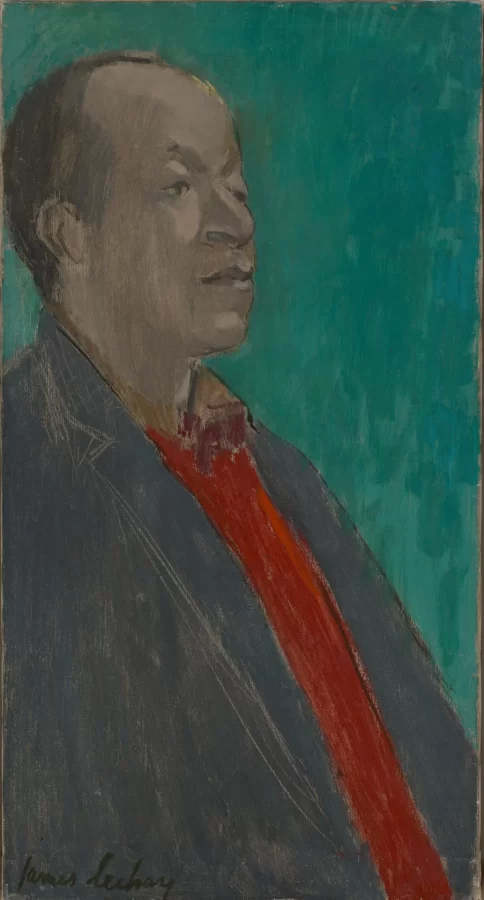Beauford Delaney (American, 1901-1979)
Delaney’s work spanned many significant art movements of the twentieth century, yet is frequently neglected. He was surrounded by the vibrant intellectual and artistic scene of the Harlem Renaissance, and he shared interests with the emerging Abstract Expressionist movement. Delaney never committed fully to figuration or abstraction, and he alternated between the artistic community in Harlem and Greenwich Village, where he pushed abstraction in new directions. He made many artist friendships, despite struggling with mental illness and anxieties that were often exacerbated by the obstacles and vast inequities experienced by being a gay Black man.
Delaney was born in Knoxville, Tennessee and was first noticed by Enoch Lloyd Branson, a well-known Impressionist painter from the area. Delaney finished his first commissioned picture at the age of 14. He moved to Boston in 1923 where he attended evening seminars at the Copley Society to study Classical art. Delaney participated in a Works Progress Administration-funded painting project at the Harlem Hospital. He then moved to Paris at a time when the American art scene was becoming internationally known. Today, his reputation has grown through those who recognized his talent, such as writer James Baldwin, and his work is now held in collections at the Philadelphia Museum of Art; the Cleveland Museum of Art; Harvard University Art Museums; Art Institute of Chicago; Knoxville Museum of Art; The Minneapolis Institute of Art; and The Studio Museum in Harlem.


